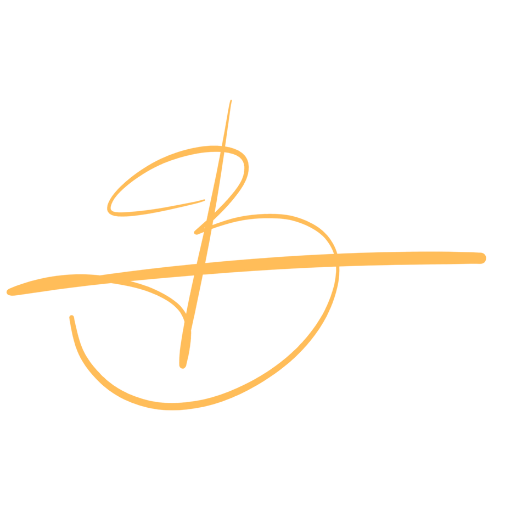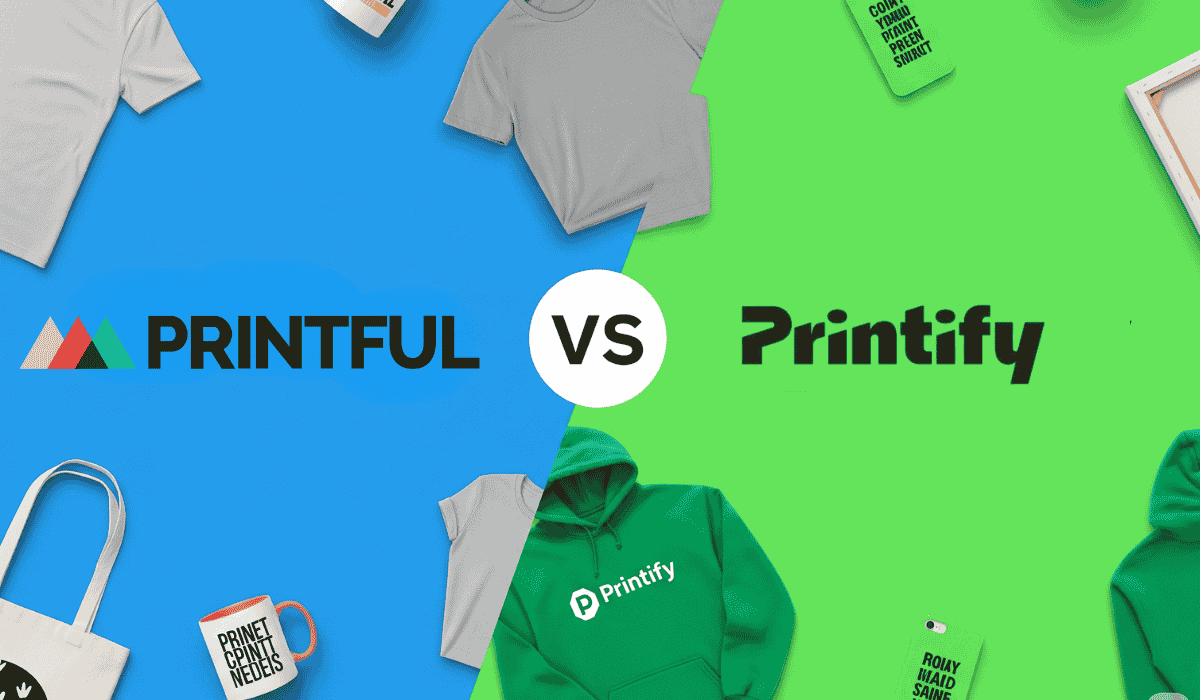In this post, I’m putting Printful vs Printify to the ultimate test based on my unfiltered, in-the-trenches take.
Choosing your print-on-demand partner isn’t just about picking a supplier.
It’s about choosing a business partner.
I learned this the hard way after co-running a 7-figure POD company and overseeing the fulfillment of well over 100,000 orders.
The platform you choose will define your product quality, your shipping times, and ultimately, your brand’s reputation.
This isn’t just another review where I list features from a pricing page.
This is my unfiltered, in-the-trenches take.
I remember when the POD scene in Vietnam exploded back in 2014. We weren’t using Printful or Printify back then.
The kings were platforms like Teespring, Teechip, and Customcat. Their model was simple: create a store on their site, run ads to it, and they’d handle the rest.
But the game changed.
Around 2018, as sellers like me got smarter and moved to marketplaces like Etsy or our own Shopify stores, those platforms started to fade.
And in their place, two giants rose to power: Printful and Printify.
I’ve worked extensively with both.
I’m going to share the real stories: the costly mistakes, the hard-won successes, and the specific platform my own multi-million dollar company trusted to build its foundation.
If you’re serious about building a real POD business, this is the only comparison you’ll need to read.
Printful vs Printify: The Quick Verdict for Busy People
I know you’re busy, so let’s get straight to the point.
Choose Printify if: You’re a new seller, your top priority is maximizing profit margins, and you want the widest possible selection of products. You’re willing to do a bit more work to manage different print providers to get the best price.
Choose Printful if: You’re building a premium brand, you prioritize consistent quality and a smooth customer experience above all else, and you want more branding options. You’re comfortable with slightly higher base costs in exchange for reliability.
What did my company choose? We started with Printify for its price advantage.
What’s my recommendation for a beginner today? Keep reading. The answer isn’t as simple as it used to be.
The Single Biggest Difference: Business Models
Before we dive into features, you have to understand this one core difference. It affects everything else.
Printful is a Manufacturer. They own and operate their own printing and fulfillment centers across the globe. When you place an order, Printful prints and ships it themselves.
This means you get a very consistent, predictable experience.
Printify is a Network (a Middleman). They don’t own a single printer. Instead, they connect you to hundreds of independent print providers around the world. When you get an order, Printify routes it to the print provider you’ve chosen.
This gives you flexibility and competitive pricing, but it also introduces more variables.
My entire experience with both platforms boils down to the pros and cons of these two models.

Head-to-Head Comparison: My Real-World Experience
Let’s break down the factors that actually matter when you’re running a POD business.
Pricing & Profit Margins: It’s a Closer Race Than You Think
In the early days, this was a no-brainer. Printify was significantly cheaper.
That price difference was the main reason my company chose Printify to start. Even a $0.50 to $1 difference per shirt adds up to a huge amount when you’re selling thousands of items.
But things have changed.
From 2023 onwards, I’ve observed a shift in the market.
Due to the complex political and economic situation in the US and worldwide, prices began to escalate. This forced many individual print providers on Printify to gradually increase their prices on certain items and variations to adapt.
This has caused the once-clear price gap between the two platforms to narrow considerably.
Printful’s Secret Weapon: The Growth Plan Printful’s paid plan, “Printful Growth,” offers significant product discounts (up to 33%). And here’s the kicker: once your annual sales reach $12k, the plan becomes free for the whole year.
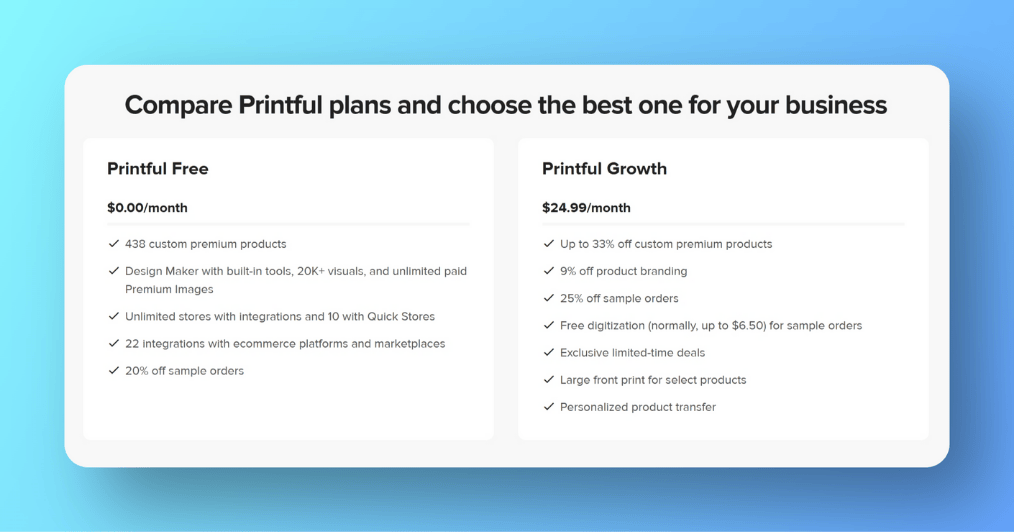
When that happens, Printful’s prices can actually become cheaper than Printify Premium for many popular items.
Binh’s Take on Pricing
For absolute beginners, Printify’s free plan still offers the lowest entry cost. But if you plan to scale, you need to do the math.
Don’t just look at the base price. Factor in the Printify Premium discount vs. the potential discounts from a (free) Printful Growth plan.
The “cheaper” option isn’t always obvious.
Many sellers, especially in Vietnam, stick with Printify out of habit from when their prices were much better, or because tracking hundreds of provider prices is a full-time job in itself.
- Pros (Printify): Generally lower base prices on the free plan, wider range of price points from different vendors.
- Pros (Printful): Predictable pricing, amazing discounts with the Growth plan that can make it cheaper at scale.
- Cons (Printify): Prices can fluctuate between providers, making profit calculation complex.
- Cons (Printful): Higher base prices on the free plan can be intimidating for beginners.
Product Quality & Consistency: The Price of Predictability
This is where Printful’s in-house model shines.
With Printful, the quality is remarkably consistent. A t-shirt printed in their LA facility will look and feel almost identical to one printed in their European facility.
This is critical when you’re building a brand. You want your customers to have the same great experience every time.
Printify, on the other hand, can be a roll of the dice.
The quality depends entirely on the print provider you choose from their network. Some are fantastic. Some are… not.
My Real-Life Experience: My company faced serious quality issues with certain Printify providers during peak seasons. We’d get a batch of faded prints or misaligned designs that led to angry customers and refunds.
During those times, Printful was our reliable backup. We’d temporarily switch fulfillment to Printful. The profit margin was slightly lower, but it was worth it to maintain customer satisfaction and keep the business running smoothly.
Binh’s Take on Quality
If your brand is built on premium quality and you can’t afford any mistakes, start with Printful.
If you’re willing to do the homework of testing samples from different Printify providers to find the hidden gems, you can get great quality for a lower price.
But be prepared for the occasional quality control headache.
Integrations & Technical Headaches: A Story of Sales Tax
On the surface, both platforms integrate with the essentials: Shopify, Etsy, WooCommerce.
However, Printful has always been ahead of the curve, offering a wider range of integrations much earlier.
The Amazon Fiasco: A huge market for my company was Amazon. For years, Printify struggled to get an official integration, while Printful had it running smoothly.
This was a significant missed opportunity for Printify and a major frustration for sellers like me.
The Sales Tax Nightmare on Printify: This was one of my biggest technical headaches.
For a long time, Printify’s integrations (even with Etsy) had a serious flaw where sellers were charged sales tax twice.
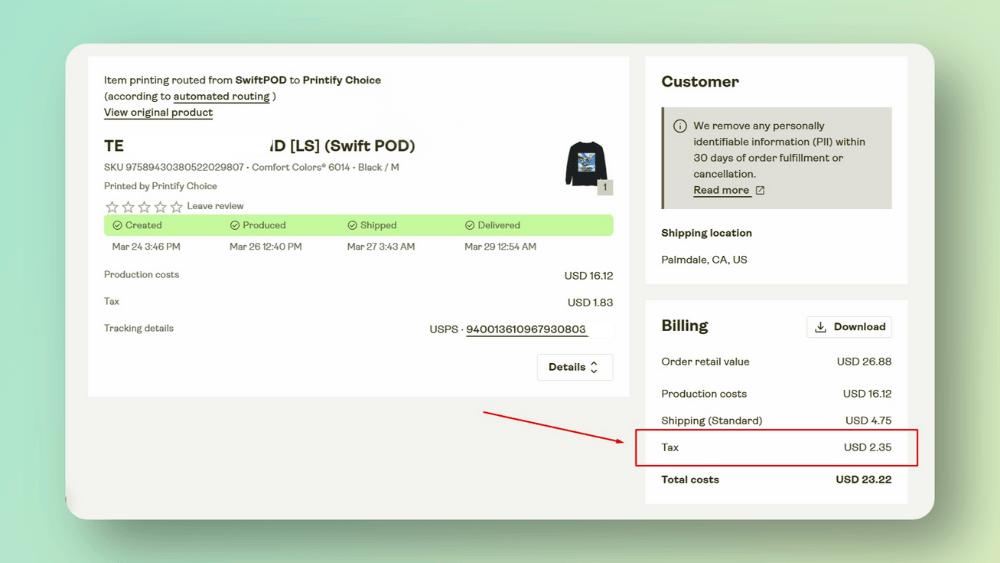
The marketplace (like Etsy) would collect tax from the customer, and then Printify would charge us sales tax again on the fulfillment cost. This was unfair and took them a very long time to fix.
Printful, on the other hand, handled sales tax exemption properly and clearly from the beginning.
Binh’s Take on Integrations
For basic Shopify or Etsy integration, both work fine now.
But based on my history, Printful’s tech team has consistently been more robust and proactive, leading to fewer technical headaches down the line.
If you plan to sell on a wide variety of platforms, Printful is the safer bet.
Customer Support: The Vietnam Connection
Both platforms offer standard support via chat and email.
But here’s an insider tip for Vietnamese sellers: Printify has a local support team.
As the POD market in Vietnam exploded, Printify invested in a Vietnamese team. However, this high-level support is typically proactive and reserved for “big sellers” with a significant fulfillment history. For smaller sellers, you’ll still rely on the general support channels like their Facebook Group or Telegram.
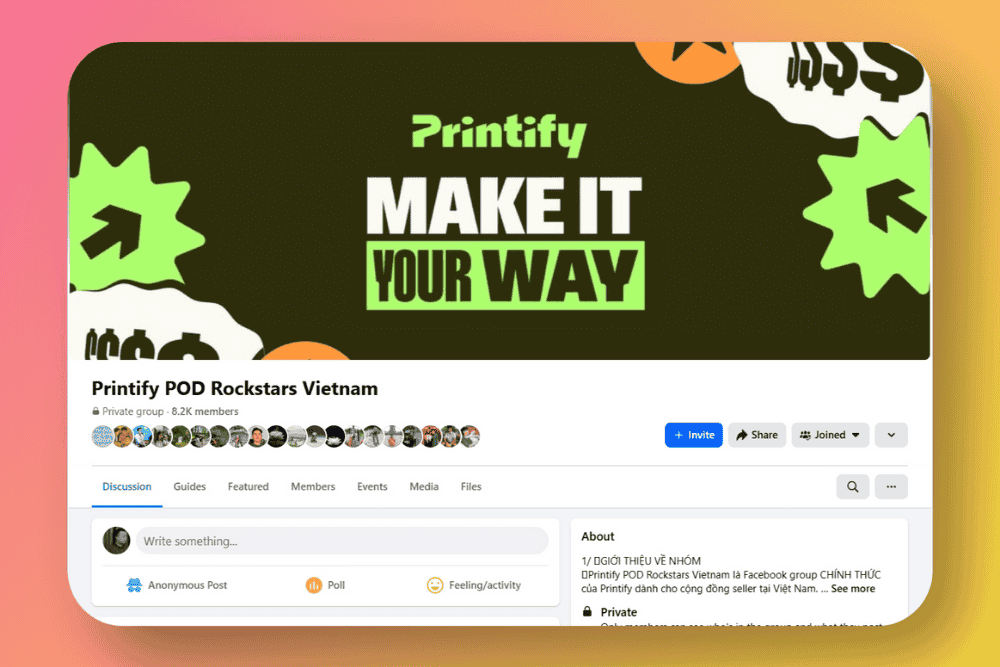
Printful, despite its quality, hasn’t developed a strong focus on the Vietnamese market and lacks dedicated local support.
Binh’s Take on Support
For most international sellers, support is a tie.
For high-volume sellers based in Vietnam, Printify has a clear advantage if you can get the attention of their local team.
For everyone else, Printful’s support feels slightly more polished and consistent due to their in-house model.
The Final Verdict: Printful vs Printify – Who Should You Choose?
After years of using both at scale, my conclusion is this: there is no single “best” platform. There is only the best platform for you.
You should choose Printify if:
- Your number one priority is the highest possible profit margin.
- You are willing to test samples and manage multiple print providers to find the best quality-for-price ratio.
- You want the absolute widest variety of products to test.
- You are a Vietnamese seller who plans to scale to a high volume.
You should choose Printful if:
- Your number one priority is building a premium brand with consistent, reliable quality.
- You value simplicity and a smoother workflow, preferring to deal with just one company.
- You want more built-in branding options (like custom packaging).
- You plan to sell heavily on platforms where Printify’s integration is weaker, like Amazon.
So, what’s my personal recommendation for a beginner starting today?
If you’re following my “lean” philosophy, start with Printify. The lower initial cost gives you more breathing room to experiment and find winning products.
Once you have a proven bestseller and want to create a premium version, you can then add Printful to your workflow for that specific product line.
What has been your biggest challenge in choosing a POD supplier? Let me know in the comments below!
